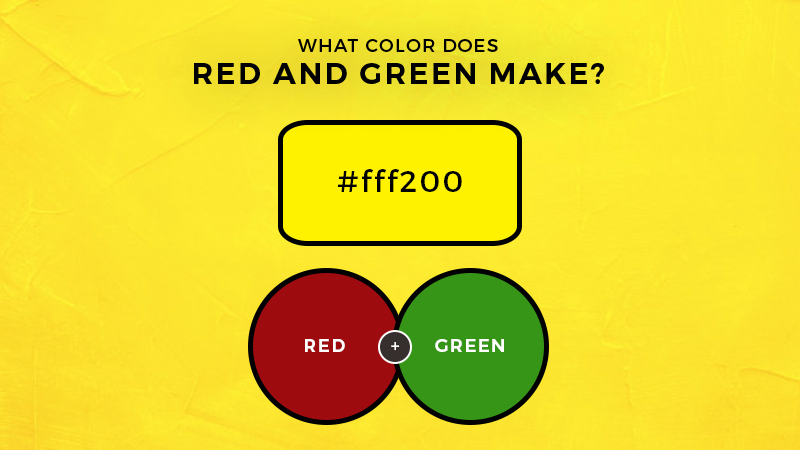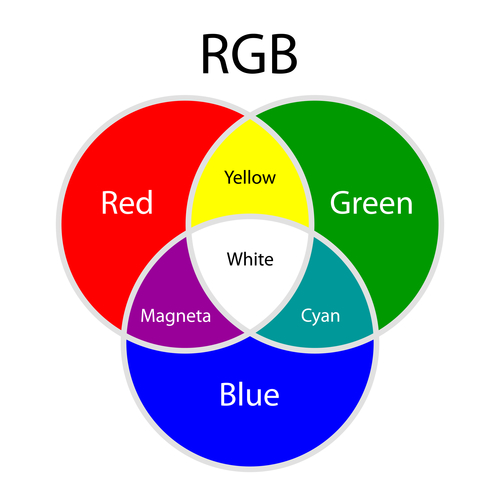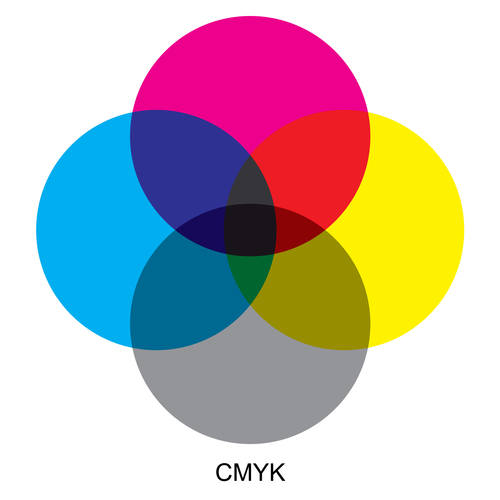If you have ever been inquisitive about the outcome of merging the hues red and green, we will explore the solution by employing two separate approaches to color blending.

There are essentially two methods for color mixing: Subtractive and Additive. Depending on the method you use, you may get a different color than what you were originally expecting.
Additive Mixing
However, in today’s technology-driven society, we often fail to recognize that the traditional method of mixing colors is not nearly as common as the additive mixing method.
This method is commonly used in most media, where computer monitors and television screens project colors. In this method, varying combinations of spectral light are used to mix colors by employing additive mixing.
There are two methods in which colors can be combined through additive mixing.
RGB Color Wheel

The secondary hues, cyan, magenta, and yellow, are created by blending two primary hues. On the wheel, the primary hues of light used in this model are red, blue, and green. The RGB color wheel is utilized for light or screen color blending.
When red and green are combined on the RGB color wheel, they create the hue of yellow.
The color wheel called subtractive mixing, traditionally used for processing print and art, is almost the opposite of the RGB color wheel. It uses the CMYK colors to mix and produce colors by utilizing the spectrums of light.
Subtractive Mixing
Mixing subtractive is a more intuitive method of color mixing, where colors are seen when pigments within a liquid or object absorb white light while reflecting the rest of the pigments, making it up in color.
Perceive our minds how is pigments red the for except light white of wavelengths the all reflects red color the, example for.
This is also used in the production process. We can see this common method of color mixing everywhere as we observe regular objects.
Unlike additive mixing, the subtractive blending method depends on the CMYK color wheel, which is mainly used in the fields of art and print processing.
CMYK Color Wheel

The primary traditional colors often correlate with these colors on the CMYK color wheel, which is used for color production in art. Unlike the RGB color wheel, which is used for combining colors across the light spectrum, the CMYK color wheel consists of yellow, magenta, and cyan colors.
However, the secondary hues are identical to the primary hues on the RGB wheel (red, blue, and green).
The base material, known as the underlying surface, bounces back from the ink and allows light to pass through the overlapped hues when the transparency levels change in the overlapping layers of primary CMY colors, resulting in a combination of colors in the printing process.
The CMY ink is applied as halftone dots, subtracting the inverse percentages of RBG from the reflected light to perceive the intended color of our eyes.
Green and Red Make Yellow Video Demo
Complementing Colors
The two opposite colors will often mix together when the wheels of color sit across from each other, referring to two colors that complement each other from a prospective color standpoint. The two opposite colors will turn gray.
When combining colors in the CMYK model, shades of brown to gray can be used, and they can be complemented by green and red shades.
Due to the presence of yellow pigments, the green color contributes to warmer tones in the color mixture, while mostly using cooler tones in the combined color. For example, red and blue-green pigments may combine to create a grayish color. On the other hand, to create a brownish color, red and blue-green pigments may combine, making the color mixture appear mostly cool in tones.
Depending on the method you use, you may see a lovely yellow glow on your screen or print in shades of gray or brown. As you mix colors, you can see that there are a couple of different answers to your question, as green and red make a combined color.
To achieve your desired result, having knowledge of the media or technique you intend to blend them in will aid you in making the optimal choice regarding which hues to utilize.